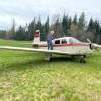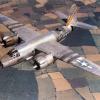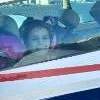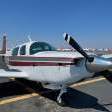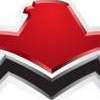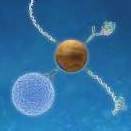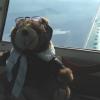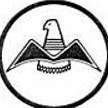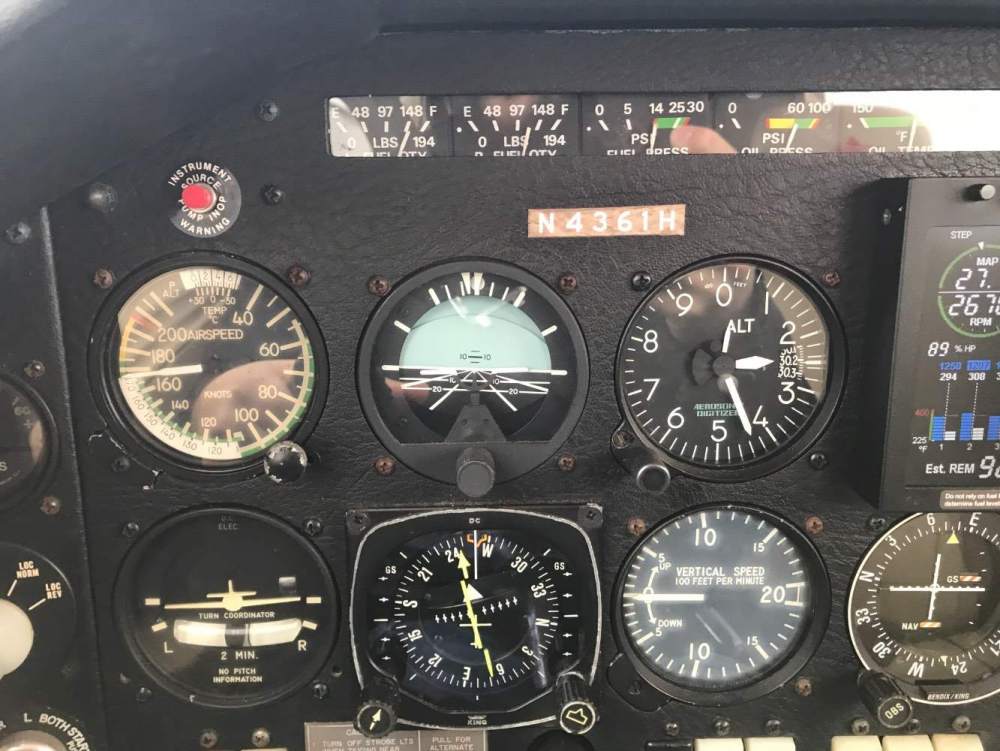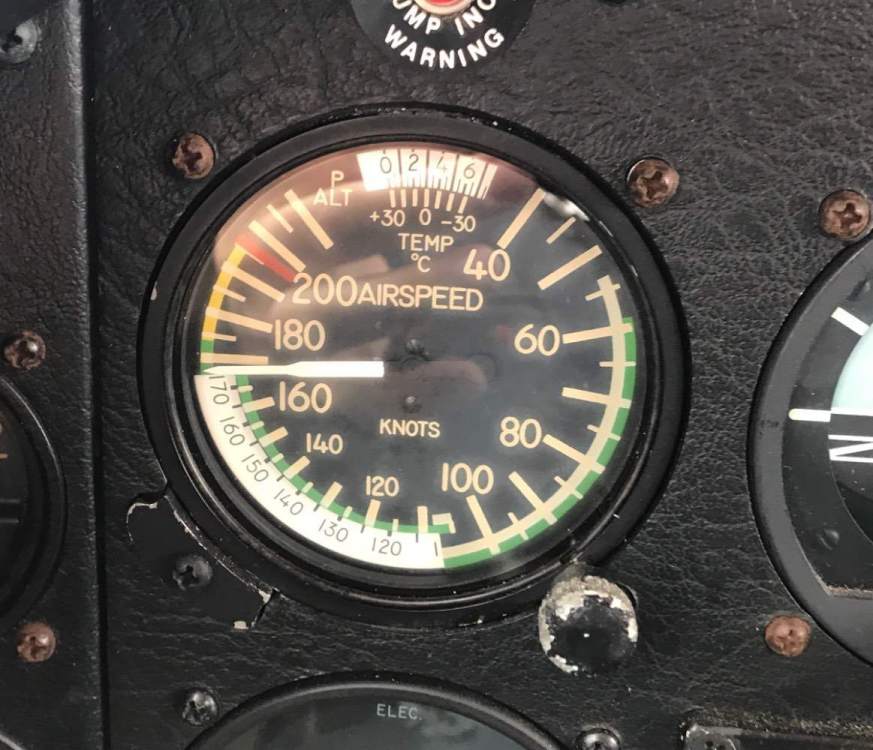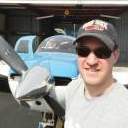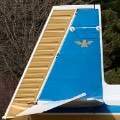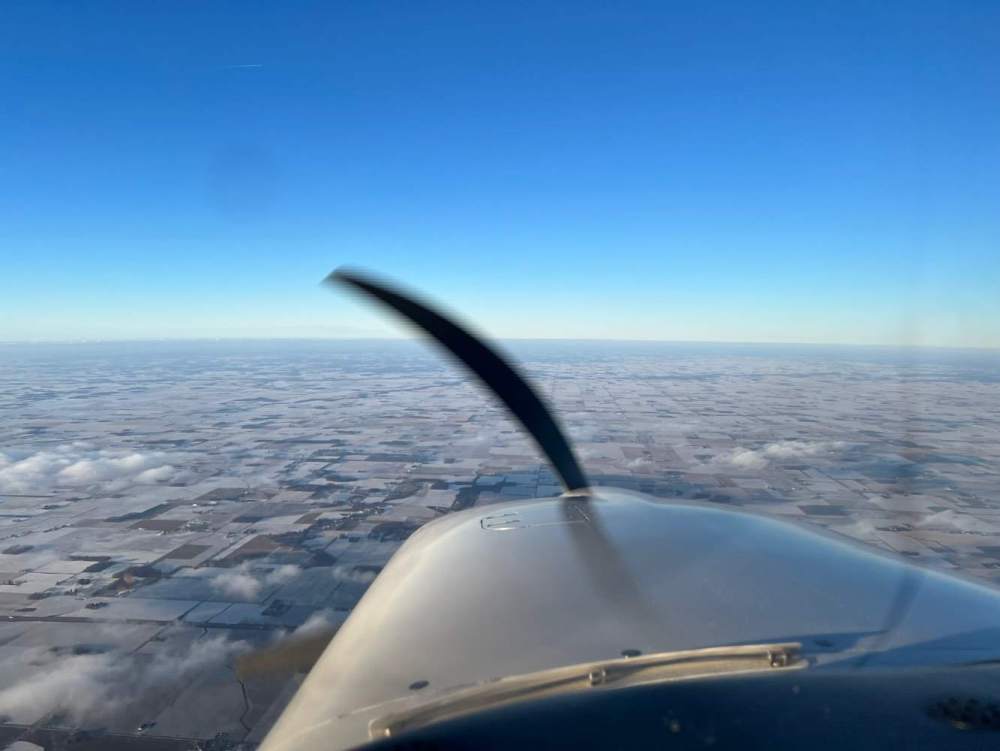Leaderboard
Popular Content
Showing content with the highest reputation on 01/05/2022 in all areas
-
For months I have wanted to share my recent experience on this site which I have been reading, enjoying and getting a great deal of information from other Mooney owners over the last many months. I owned in a partnership a c182 for 25 years and had to sell it about 7 years ago. divorce and life changes. had always dreamt of getting a Mooney. Looked at my resources and age and said I could and should do it. Figured 10 years or so of health and at least I think mental acuity to continue flying and could afford it. besides, have a 22-year-old grandson that really wanted me to get it. I’ll tell more about this soon. we shopped together. So in March I found a 1966 M20E with Ray Jay. Good condition, low hours and reasonable price. Live in Spokane and thought I’d have to look and travel all over to find one, but one was in Moses Lake about 100 miles away. Bought it and started my adventure. I got a hold of an instructor and began my training and transition from the high wing, fixed gear experience. got checked out and flew a bit. Got about 25 hours in it and wanted to get it to my grandson to get his rating in it. This is what I want I really want to share. For those of you that have children and grandkids this is special. Love this young man. Grandson is a senior student at U of North Dakota in the aviation program. Already at 22 a commercial helicopter pilot with instructor rating but not fixed wing. So I’ve helped get the new generation into flying. So in June he and I flew it back to Grand Forks for me to leave it with him to get certified. A few problems and difficulties with the plane and hard time getting A&Ps to work on it took some time along with weather and his schedule kept it with him a bit longer than anticipated. Finally in December he got his check ride done and he is now in that unique arena of being dual certified. And in a Mooney. Then needed to get it back to Spokane/KCOE. With the winter weather. He and a friend got some good weather and got it to Billings. Left it there and went back to UND for finals. Then he, his wife and his instructor got in the car to come home for Christmas. Picked the plane up in Billings and got it to Missoula. I met them and then realized I really should not fly it to Spokane. It was night and not a good idea so drove back home. Last Wednesday we drove to Missoula and after a wait for bad weather finally was able to leave with a clear sky to the west. Flew on top to Sandpoint (KSZT) where we were able to descend through a hole and land. Took a rest and brought it to its home in KCOE. So i finally have it back and now after many months need to refamiliarize myself with instruction to get fly “my” plane again. Thanks for reading. I’ve enjoyed sharing this. Hope you like it. Dick12 points
-
6 points
-
Lots of waiting on the engine…. Happy to report I finished the pilot yoke. Some of you guys may remember the copilot yoke I wrapped last year. I sandblast, clean, zinc, and prime before leather goes on. The mooney motif is Cnc laser etching. That’s a 3D printed iPhone holder that bolts in place of the clock.5 points
-
Flying my M20K 231/Rocket 305 through eastern Washington this New Years weekend at 14500 MSL in VFR conditions, I felt some light turbulence. After about a minute, it occurred to me that the turbulence was not changing in amplitude like turbulence usually does. I considered whether it could be a small prop imbalance due to icing, but that would be strange since I had been in clear air since takeoff an hour earler. I considered whether it could be a cylinder misfiring, but EGTs were normal on all cylinders, and TIT remained where I had dialed it in. Manifold pressure remained at 30 inches, engine speed was still 2400 RPM, and I wasn't losing airspeed. Then the engine sneezed. That got my attention. I aimed towards the nearest airport, pulled out three inches of manifold pressure, pointed the nose down, and popped the speedbrakes. The engine sneezed one more time on descent, but I stayed focused enough to run all my checklists and grease the landing. Maintenance wasn't available on the weekend, so the aircraft sat on the ramp, shivering ignominiously in sub-20F temps. First thing Monday morning, we brought her into the hangar and immediately pulled a belly pan and opened the gascolator/sump to look at the fuel strainer screen. It was partially coated with what looked like a very thin paste - imagine spreading the thinnest possible layer of white or maybe grey toothpaste over the screen, then wiping it off so you could see through it. Over the next 30 seconds, in the warmish hangar, the paste melted and turned into beads of water. This topic has been covered on the forum in the past (e.g. So whats too cold for the plane and IPA Winter Ops), but I figured a fresh PIREP is always a good PSA. In reading through those topics, I noticed a couple comments that deserve a response. kortopates wrote "I really don't believe there is risk of fuel becoming saturated with water unless there is more moisture than just humid air in the tanks" but then, in a very gentlemanly and helpful way, he retracted his statement and shared Mike Busch's observations: He [MikeB] told me there is a real risk of dissolved (undrainable) water coming out of solution at low temperatures and freezing into ice crystals that can cause engine stoppage. He knows of several emergencies that occurred because of this, although it's definitely not common. Mike says these incidents don't occur in the wintertime as far as he knows. He says the major risk is taking off from a low altitude airport where the temperature and humidity are high and the fuel has become heat-soaked because the aircraft has been sitting in the sun for some hours, then climbing up to the Flight Levels where the OAT is very cold. It takes very hot fuel that can hold a lot more water in a dissolved state (as you pointed out before). The conditions leading to this issue have always been summertime conditions though, not winter. I will simply add that 1) it's winter now, and very very cold for the Pacific Northwest, and 2) I fueled (almost 60 gallons to top off) from an above-ground tank that was at below-freezing temperatures. Thus, I have an existence proof that it can happen in winter with cold fuel. jlunseth wrote of his experience never having this problem: "Fuel gets put on board at ground temps which are warm, and in relatively humid conditions. Then I go to altitude, stay there for 4 hours at -25C, and nothing happens. " Well, this happened to me after only 1 hour at altitude, and yes the OAT at that altitude was -25C (=-13F). I do have many hundreds of trouble-free hours flying this aircraft and another Mooney at temperatures significantly below freezing, though usually never lower than -10C. This happened to be the first time for me in this aircraft flying at -25C. I had done a thorough sump/drain before my flight and there was no evidence of liquid water at all. After observing the ice crystals in the strainer screen, we drained half a gallon from the wings and the sump and there was still no evidence of water. For those who haven't followed the threads, the culprit is water dissolved in the fuel, not free liquid water. 100LL can't dissolve much water, but water is not completely insoluble in fuel, and having tiny amounts of water (on the order of 30 parts per million) dissolved in the fuel is OK so long as it remains dissolved. Sub-freezing temperatures and nucleation sites (perhaps even localized turbulence as fuel flows through a fine mesh) will cause the water to precipitate out as microscopic ice crystals. Once an ice crystal forms, it's going to continue to grow as more fuel flows past it and dissolved water preferentially attaches itself to the crystal structure. These crystals can attach themselves to rough surfaces, get caught in fine mesh screens, or plug tiny injector orifices. For you chemists who are concerned about the proper use of the word "dissolved", I admit I don't know if the water is truly dissolved in the gasoline (= in solution on a molecular scale) or simply finely divided and in suspension (= extremely tiny water droplets that are still orders of magnitude bigger than molecular scale). AC 20-125 discusses "entrained" water and describes it as the latter. I will note that our white bucket test revealed the gasoline in my tanks to be both "clear=clean" and "bright=dry", with no cloudiness that would indicate entrained water. The solutions to the problem, as have been discussed elsewhere on this forum, are: 1) If the fuel is dry, ice can't form. Read AC 20-125 to understand the various ways water can get introduced into fuel. Use fuel from trustworthy tanking/pumping systems that are properly maintained. Make sure your gas cap O-rings are in good shape. Always sump your fuel to check for water. 2) If the fuel has water but remains above freezing as it travels through the aircraft fuel system, then small amounts (30 ppm or less) probably won't have any effect on operation. 3) Adding anhydrous isopropyl alcohol (IPA) to the fuel, in amounts not to exceed Mooney SI M20-64, encourages the water to dissolve into the IPA, which lowers the freezing point of the water, hopefully enough to prevent it from precipitating out as ice. 4) (my recommendation) After taking off from hot and humid conditions, or even cold and dry conditions, when flying for as little as M minutes in temperatures below N degrees C, choose an altitude and a route that give you good descent and landing options in case, like me, you encounter fuel system icing despite all the normal precautions. In my case, M was 60 and N was -25. I am congratulating myself on electing to perform that flight on that day only because it was VMC and, in the event of a problem, I wouldn't have to descend through several thousand feet of icing conditions. I am also considering myself lucky that it didn't happen 30 minutes later over the Cascade mountains.3 points
-
The accident rate is better now than it was then so you can go ahead and keep on flying.3 points
-
The drain only empties the sediment bowl which collects liquid water and particulates. During operation, fuel from the tanks fills the bowl and exits the top through a filter screen which is what collected the ice crystals. So, there is no flushing action through the screen by opening the drain. Skip3 points
-
It’s always fun reading these threads. Like a bunch guys in a locker room comparing their manhood. The reality is that your accurate TAS will vary based on a bunch of different factors — even in an everything firewall forward situation. > the accuracy of your ASI (if you’re using that method) > the CAS correction > whether your prop is really spinning at 2700 > parasite drag caused by something dragging (flaps, gear, etc.) or something in the breeze (antenna) > whether your engine is actually able to produce full rated power > your weight, your plane’s weight > forward or aft CG > the quality of your paint > whether or not you are properly measuring it So, with that. My 1975 F is a 200 knot airplane take 45 to 50 knots or so… [emoji12] Sent from my iPad using Tapatalk Pro3 points
-
Rigging problem resolved! Thanks to Andy and others who pointed me in the direction of AGL Aviation At Foothills Regional Airport in Morganton North Carolina. I flew up there yesterday and flew back as a happy camper. Lynn and Nathan knew exactly what to do. My ailerons were wrong, my elevators were at different angles, my rudder was not adjusted properly, my turn coordinator was off, and my flap and trim gauge was reading incorrectly. They went to work on it and by the time they were done I had a different airplane. Lynn went up with me to test everything at the end. I have had this plane for 15 years and the flight controls had never been adjusted. I should have done this years ago. It flies straighter, holds altitude better, and it is ten knots faster (NOT exaggerating.) For the first time ever I am getting indicated airspeeds that the POH says I should get. Can’t say enough good things about these guys! Thank you to them and thank you to you guys for sending me over there.2 points
-
The super-absorbent polymer they use for jet fuel is great for absorbing water, but I recall there was an airline accident where the polymer broke out of a filter and contaminated the fuel. FWIW, miscibility is the same as dissolving, it's a truly homogenous solution. Water is barely miscible in gasoline (about a tablespoon in a tank's worth of avgas), so hard to imagine it could have been the culprit. Suspended or entrained water can be a lot more, though numbers are hard to come by and probably vary with a lot of factors. https://www.faa.gov/documentLibrary/media/Advisory_Circular/AC20-125.pdf2 points
-
I just use Aero Cosmetics Wash n Wax. Lean the one piece belly against the wall and clean it in halves, left and right. Takes about 5 minutes. Easy to spot clean during the year on a creeper.2 points
-
I don’t like EIS on G3X just because it takes up space and prefer my PFD panel to be larger than smaller.2 points
-
Not necessarily. My #4 cylinder had a perpetual oily bottom spark plug starting at about 500 SMOH. I did the ring flush using Marvel Mystery Oil. It worked. Two years later, the bottom plug still looks like all the rest. It seems like a good thing to do to keep a small problem from becoming a large one.2 points
-
They taylor the material for your plane to a degree. I brought my acclaim to one several years ago and I asked them to update it in the future and they said they would. covid knocked out the ones I scheduled since then. they did put me with an instructor with a lot of acclaim time. it was helpful and they do a lot of things for which you just seldom find time. if you have never been you should go, it is well worth it. Plus you get see a bunch of Mooney’s!!2 points
-
Regarding whether to go with the Garmin EIS or separate JPI: I haven't been able to fly hardly at all since I got my plane and new panel back, so I have nothing to complain about with the Garmin EIS. On the one hand, so far, so good. The Garmin EIS on the G3X has the info I need and uses less panel real estate, has the Lean Assist that I'm adapting to after the JPI 700, and it has downloadable data (which I still have to learn). Also, the engine data is available right in front of me now instead of off to the side, but I could have gotten a JPI in the same neighborhood. On the other hand, JPI is an expert company in the EIS business, and I like their display. Plus, I could have re-used my existing probes, so maybe it would have cost a little less; hard to say. Also, I saw the comments about losing all my engine monitoring if the G3X display goes, but I also saw some mitigating comments on that score. On that last point, I guess I'm satisfied to make the leap of faith that the certified G3X will be suitably reliable. So like all this stuff, personal preference...... Probably not real illuminating. I'll have more of an opinion on the Garmin side of the equation in a month or two.2 points
-
The Circling Minimums for LOC-D approach are higher than the circling minimums for GPS17. They would have had to level off at 1940ft which likely would not have been 500 below clouds to be legal VFR to cancel. Had they flown the LOC-D, they would have had to circle to 9L, 17, or go missed. Doing the GPS17 was more clever as it has lower minimums and would have either been a straight in or a VFR pattern 27R. Only it didn’t work out… Maybe they should have requested SPECIAL VFR!2 points
-
2 points
-
2 points
-
I tried every trick I knew to fix this thing to no avail. The event viewer showed some windows updates about the time the thing stopped working but even going into regedit and making changes did not help. Seems the issue was more than just in Garmin's software. Garmin has now released something called Garmin Aviation Database Manager and it is quite different than the previous program. Installed it and I am now working again. Mike2 points
-
This was confirmed to me recently by Hartzell (plane power) support; specifically 14.2V +/-.3. Plane power troubleshooting is here: https://planepower.aero/wp-content/uploads/2018/02/Troubleshooting-Single-Engine-Externally-Regulated-Alternators.pdf2 points
-
Devil's advocate - assuming you are talking about using this airplane for instruction, perhaps find an instructor that is comfortable teaching / flying without brakes on the right hand side? That is an awful lot of work to make one instructor happy.2 points
-
Bottom line - the OP wants at least 10 hours of flight time on the plane to make up for 15 years of being on the ground. In my opinion, that's not enough... by a long factor. Here's an example. I know someone who bought a Mooney with about 400 hours/10 years on it. Even after 160 hours-in-a-year, there are still kinks to be worked out in that plane. So I'm told. I cannot even begin to imagine the metaphorical cobwebs sitting on an idle 15 year-zero hour plane. Also worrying is that an A&P couldn't get this plane back in the sky - a cylinder here, a transponder there, was the best they could muster. I suspect there's a lot more to be done. A new owner who is not an A&P will be at the mercy of a local shop or MSC to get this plane squared away - and given schedules in maintenance shops these days, that could set this OP back by months, even a year, to get in the air. Bottom line - if the OP wants to fly, I would suggest they avoid the 15 years of deferred maintenance and the almost-guaranteed extreme wait times to get this plane squared away - spend a bit more, and buy a plane that flies 100+ hours/year. That way, the OP will be able to sleep soundly at night knowing they will 'probably' be able to fly that much right away themselves too.2 points
-
Having made this mistake before, I would highly recommend doing whatever it takes to do it once and do it right. Doing it in multiple stages is a painful process. You're always thinking about the next stage. Every time they open the panel they will blame the previous person for it not working right. This can still be done on a budget. In that case I would consider the GNX375. You get a WAAS GPS, ADSB-in and out and a new transponder in one box. The older transponders with cavity tubes are on borrowed time. Sell your KX-155 and your glideslope indicators and whatever you're using for ads-b out (tailbeacon or gld-82 or ??). Cut a new left panel and do 2 indicators (G5 or GI-275 would be my choice) and turn the JPI900 90 degrees right, flush mount it and have it display horizontally for aesthetics. You'll have the GMA340, GNX375, GNS430 and GFC500 in the center stack. Take the USB jacks and put them where the ashtray is below your quadrant. Your right panel will be a blank canvas for whatever you want. It won't be cheap but you're done for awhile. If you haven't done WAAS approaches (or coupled WAAS approaches) you will feel like you have a new airplane with the new capabilities. Hats off to you getting your instrument rating and staying instrument current on swinging needles. Been there, done that, but I don't feel like going back. You will feel like you are cheating with these improvements.1 point
-
Another thread was talking how to make a plane go faster, well yours is going to go at least 10 KTS faster with that exhaust. People here at the airport are always giving me grief for cleaning, painting and polishing everything. You are making me look like a poser. It looks great!1 point
-
Another perspective.... The most recent that I found were 2018...... 2018 had 25,000,000 (twenty five million) flight hours 1275 accidents 225 of them being fatal accidents 381 fatalities The vast majority of these accidents are fuel starvation or weather related. if you assume an average of 2 hours per flights. your odds of an accident are .000153% your odds of it being fatal are .0000457% even if you assume an average of 4 hours per flight. your odds of an accident are .000204% your odds of it being fatal are .0000609%1 point
-
This not an STC since its offered by Mooney (the manufacturer). (STC's are only for mods that don't originate by the manufacturer). Its merely a Mooney SB M20-248. You can download the SB from Mooney.com. The gear doors used after complying with the SB should be the same gear doors used on all longbodies ever since (current production), but will be the part # in your M20M Illustrated Parts Catalog (IPC) for Bravo's after serial 27-0052 https://www.mooney.com/wp-content/uploads/2020/12/SBM20-248.pdf1 point
-
I really appreciate this thread. I was unaware of the option to add IPA. I'm headed to Utah to go skiing later this month from MS., In all likelihood, I will depart from warm weather to very cold up high. I will add IPA now. Thank you so much for improving the safety of my flying.... Alex1 point
-
Great post SpamPilot. Great job handling the situation. You had a rather unusual circumstance of actually definitely finding the ice and watching it melt away. I presume in many situations the evidence melts away before it can be seen and then one is left wondering! Right - its the temps at altitude that are important. I have been using IPA in the fuel in recommended ratios for years. I have not had this particular problem myself, but I have known others to have had it and that is good enough for me to include IPA in my operation. By the way - I like these - since they are pre-measured and right sized for one tank per sized container. I don't want to open a large jug of highly pure IPA just to have it gradually have the jug start to retain water before I end up using it. These are sealed, right sized and easy to travel - add some when I am away. And we all need to be sure we get the high quality IPA rather than that 70% stuff from the drug store. https://www.amazon.com/dp/B07J62C1K5?psc=1&ref=ppx_yo2_dt_b_product_details1 point
-
There are much tighter operating limits on certified aircraft put into Experimental category. This is often done for testing, such as when Hartzell / MT are working on a new prop. It is pretty much for flight testing purposes, not for "normal" GA stuff like flying to lunch or taking the family on a trip.1 point
-
1 point
-
I don't believe there is going to be a parts problem for the KX-155. They are manufacturing new LED displays for them, so that says to me there will be plenty of support for quite sometime. My old KX-155 (which I just had overhauled with new display) will probably outlive the Garmin I have as #1 NAV/COMM in fact. Look at all the avionics that has come and gone over the years while the KX-155 keeps chugging along doing its job nicely.1 point
-
The price for a "Working when removed" KX155 is likely in the $1,200-1,500 range. Bennett Avionics sells certified units with an 8130 and a 90 day warranty for $2800. I like the KX series of radios as well (have two 165s) but the newest ones have been in service for a long time. Ours have been very reliable but not mx free. I think KX155.com is likely the low risk/high value proposition.1 point
-
Thanks for all the suggestions! I did go through the PlanePower troubleshooting guide and found that the switch/breaker/enable wire need replacement (I'll figure out which one in particular once I go to fix it) and the aux wire from the alternator isn't driving the aux input on the regulator (which is wired to enable & sense??). Voltage drop across the VR is minimal so I think it's ok. Once those items are fixed I'll test and update here.1 point
-
1 point
-
288 hours. Purchased in April, flew up to the puget sound, then down to Mexico, then back to Canada, then to Mexico and then the round trip again. Oshkosh, lots of little trips to Texas and back. Some adventures in Mexico and a recent trip to Guatemala for Christmas. It's been a great year getting to know the bird. Best part has been being able to share my love of aviation with my mom.1 point
-
I have a Plane Power alternator and voltage regulator. Mine is rock solid at 14.1V. To the OP - As others have pointed out 15 is way too high. Sent from my iPhone using Tapatalk Pro1 point
-
1 point
-
I installed the Alpha shoulder harnesses in my 1967 M20F about 10 years ago and highly recommend them. They work like a car seatbelt. Yes, the cover of the copilot belt sometimes disappears when people hit it with the body. It easily slips back on. A few years ago, I lost it. I called Alpha and the nice folks replaced it for free. Great customer service. As long as your budget will allow for the new Alpha belts, I would buy them instead of used or old ones. The material does not get better over the time and those belts are a real life-saver, if you need them. In case of a crash, they have do to a very hard job and you want them to it as good as possible. Install took a few hours, but it is really worth it. Here is a link to a study about the change of the safety belt material over the time, done from EASA, the European FAA: https://www.easa.europa.eu/downloads/1232/en1 point
-
Yeah they are wanting me to take a low settlement or put it on my policy. It’s a mess that’s been going on since July… They say the blue book value of my plane is 60k. I laughed my ass off…. And the fact it’s on someone else policy is really frustrating them, if it was on my policy they could just total the plane and it would cost them less. The design of the oil filter keeps oil from flowing back into the engine like that. I also blow the air into it the next day when 99% of the oil has drained out of it so there really isn’t much that would go back into the engine. Hope you’ll enjoy the crash series more than I hated making it…. Sent from my iPhone using Tapatalk1 point
-
1 point
-
I can barely decide on what to have for dinner as quickly as the market turns over nice airplanes1 point
-
The next MAPA PPP is scheduled for the end of this month in Lakeland, Florida. I am planning to be there with one of my “learners” in his M20J.1 point
-
1 point
-
25ish... but I have extensive hours on the phone with IA/A&P's!1 point
-
No, I got lots of time in turbos, several thousand, but at my age and with most my flying east of the divide, I don't need to be sucking on a tube to go somewhere. I have the added benefits of not writing checks to maintain the turbo as well.1 point
-
Lear is a handful on a tight pattern, low, at night, in poor vis…1 point
-
2020 Accomplishments: Successfully maintained a flying job through COVID (172 survey). Achieved 1200hours Bought a house in FL. Left the next day and moved to Maine for work Got hired by 135 cargo flying a kerosene burner. Flew ~300 hours in some crappy NE icy nights while toting 40lb Jepp charts. Achieved 1500 hours Ferried an Aztec from ME-FL-ME and finished my 25 MEL hours for 121 mins Got hired by 121 airlines flying something new and fancy. No longer toting 40lb Jepp charts Finally got the Mooney back into a hangar after 3 years on a waitlist. 2021 Goals: ATP & Type Rating (next week) Go after my CFI Fly the Mooney more and start putting more money back into it Start to relax and actually enjoy life, travel more1 point
-
In my O2 GX G1000 we simply connected the LHS's audio output to the (unused) DME input channel of the GMA 1347 (LHS is a vertical Distance Measurement Equipment, isn't it?). Works like a charm, fulfills the requirement of simply muting the LHS's audio and is easy to remember (did not relabel the DME button (rationale see above)). Best, Matthias1 point
-
@Microkit Thank you! I had mine installed during annual. Still waiting for the bill to see how much it cost. Will post when I get it. Let me say the LHS is fantastic. I did not fly for 2 months (simple annual, no problems!! but that is another story) so I was a little nervous when I went out for my first flight yesterday. A little background. This is my third Mooney. Started with a C model which I could land on a dime. Moved to a K model. By the end of the first year I could put it down anywhere. A year ago I bought an Ovation. Given my schedule I only put 50 hours on it. I had a lot of trouble with the landings. Never could get that last few feet right. Flare to low, flying it on the runway. Flare too high, dropping it. Never pretty. I was getting better the summer before annual. Back to yesterday. It was a little windy, but within my normal limits. I almost cancelled anyway given that it had been 2 months but I pressed on. My home airport runway is 2,440' x 40' with trees at one end and a 20 foot drop to a highway at the other end. Needless to say, coming with an Ovation, you must be on your numbers and down in first third of runway. I decided to fly to another nearby airport with 4,470' x 75' runway to practice. My first landing was high and hot but when the LHS started talking at 200' and asked for a gear check, I was able to calm things down. The countdown was great. I was on speed, on target, hearing the numbers drop. When I got to 20, I had the right sight out the window and started the flare. by 10' I was in a great position and pulled the power back. At 5' I was in the perfect attitude and had one of my best landings ever in my Ovation. Let me say that again, after 2 months of not flying, I had a near perfect landing. The LHS made that possible. It also had a calming effect. I felt I had more time to get the speed and power just right in the flare and take my time getting it on the ground. Was this a fluke? I did 2 more patterns at this airport. Now, I almost never do touch and go's in the Ovation. First of all we are not allowed to at our home airport, so I don't do too many. Second of all, even on a 4,000' runway, I find by the time I am down, reconfigured and ready to go I have eaten up a lot of runway. Not this time. On both approaches I came in on the numbers, touched down in the first 500' and had plenty of runway left. Moved flaps to takeoff position, adjusted trim, and firewalled it (slowly). Took off and did another touch and go. After 3 landings it was time to head home for the real test. Approach was good, it was a bit windy on short final. Coming in over the trees always does strange things to wind but I was focused on the approach end of the runway. There is a little valley after the trees, before the runway so the LHS was a little confused. It called out 50 over the trees then 70 then dropped to 30 right before the runway. I expected this. Again, the final countdown to 5 was great, and calming. One of my best landings and home airport ever. I was off with minimal braking well before the other end. Sorry for the long post but this tool can really make a difference. What I wasn't expecting is the calming effect. It basically makes you feel like you have more time from the approach to the round out to the flare. For comparison sake, I have just over 1,000 hours, 600+ in Mooneys but only 55 in the Ovation. Thank you! To anyone not sure if this is worth it, if you are happy with your landings most of the time, it is a nice to have. If your landings are all over the place, this is a must have. Given what we spend on our airplanes, it is a small price to pay (well, let me see what the shop charged to install it). Picture below installed under right wing, between gear and fuselage1 point
-
1 point
-
1 point

